How to Find a Roof Leak (Where to Look & What to Do)
10/22/25
6 Min Read
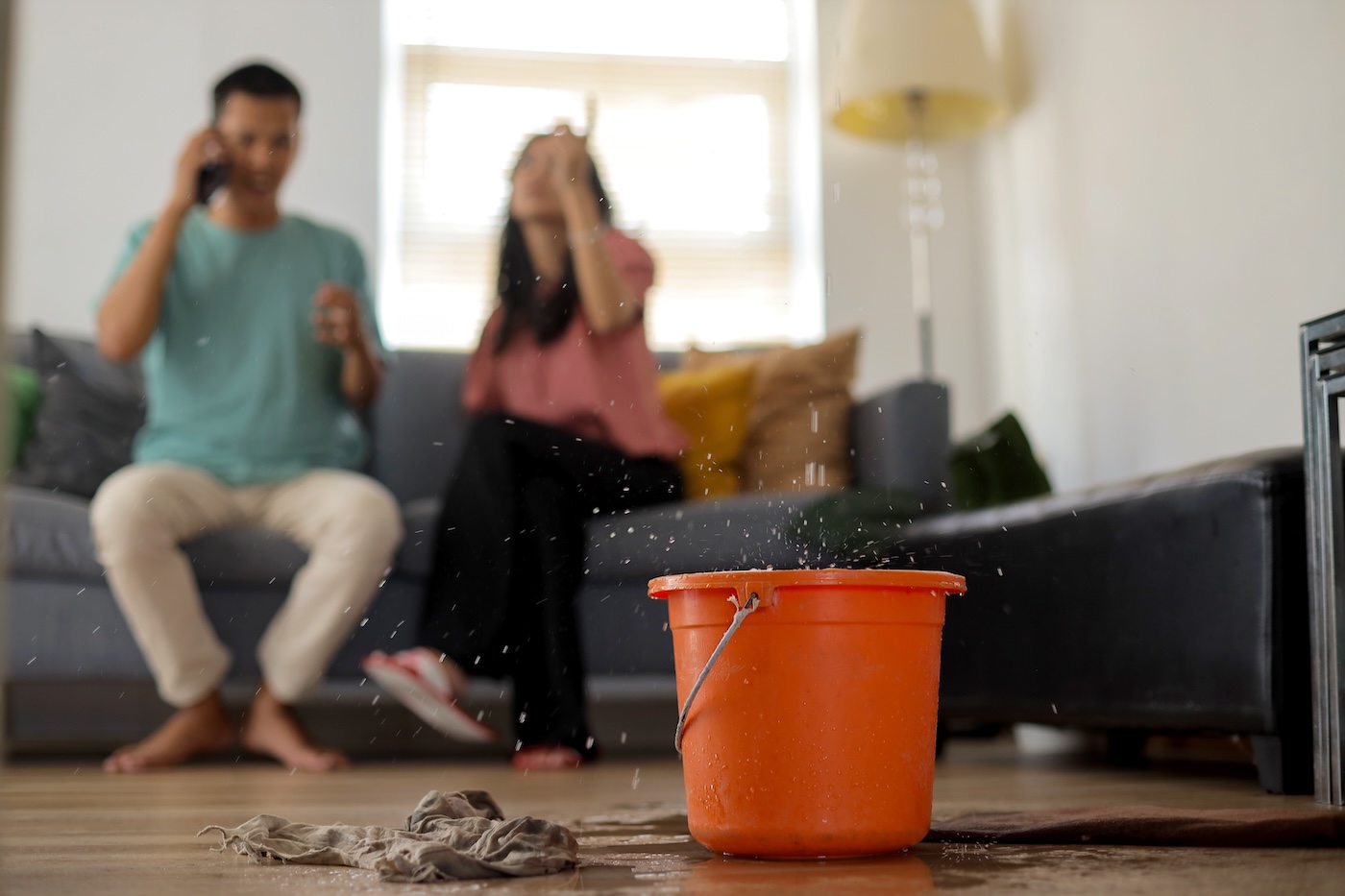
If you’ve ever wondered how to find a roof leak, you’re not alone. A leaking roof is one of the most frustrating problems homeowners face, but catching it early can prevent costly repairs. Knowing where to look and what steps to take can help you minimize damage while you wait for a professional inspection.
Here’s what you’ll discover:
- Warning signs: What to look for inside and outside your home
- Common sources: The areas where leaks most often begin
- Steps to take: What you can do right away to limit damage
- When to call: Why professional help is essential for permanent repairs
6 Key Places to Look for Roof Leaks
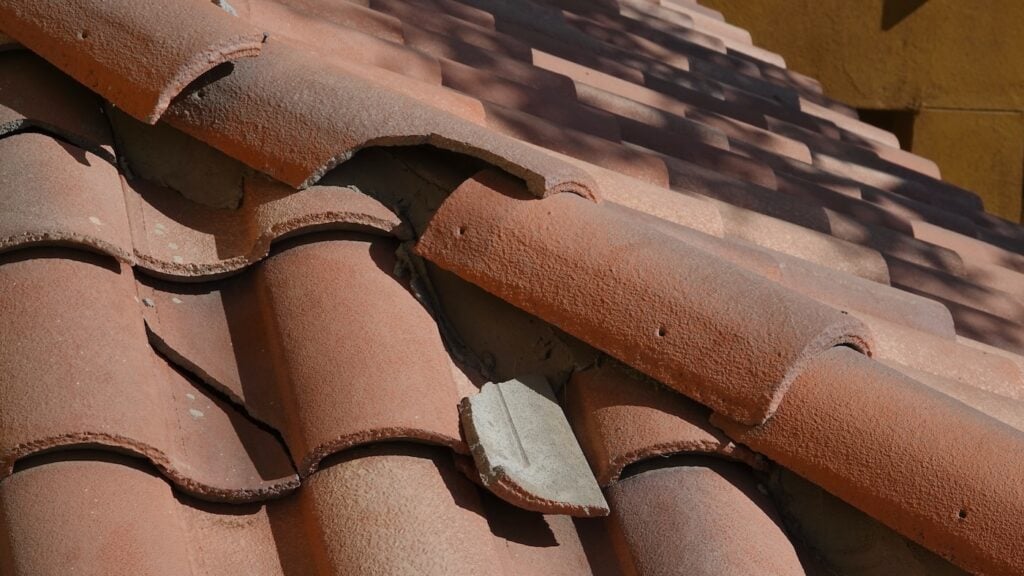
Homeowners often struggle to track down leaks because water rarely drips straight down. Instead, it travels along rafters and beams before showing up in your home. If you want to know where to start, here are the most common areas to inspect:
- Attic spaces: Dark stains, damp insulation, or visible drips often appear here first.
- Roof penetrations: Vents, chimneys, skylights, and pipes are frequent leak points.
- Flashing and seals: Metal or sealant around edges may crack or loosen over time.
- Roof valleys: Water naturally flows to these low areas, putting stress on shingles.
- Gutters and downspouts: Clogged systems force water under shingles, leading to leaks.
- Roof surface: Damaged or missing shingles are a direct pathway for water.
Why Finding Roof Leaks Early Matters
Even small leaks can cause significant problems if ignored. Water can travel through insulation, into walls, and across ceilings before you ever notice it dripping. That hidden moisture leads to mold growth, wood rot, and structural issues. The sooner you locate the source, the easier it is to stop the damage and extend the life of your roof. Early detection also saves you money by reducing the size and complexity of repairs, which makes regular inspections worth the effort. In many cases, acting quickly can mean the difference between a simple repair and the need for major roof replacement.
Early Warning Signs Inside the Home
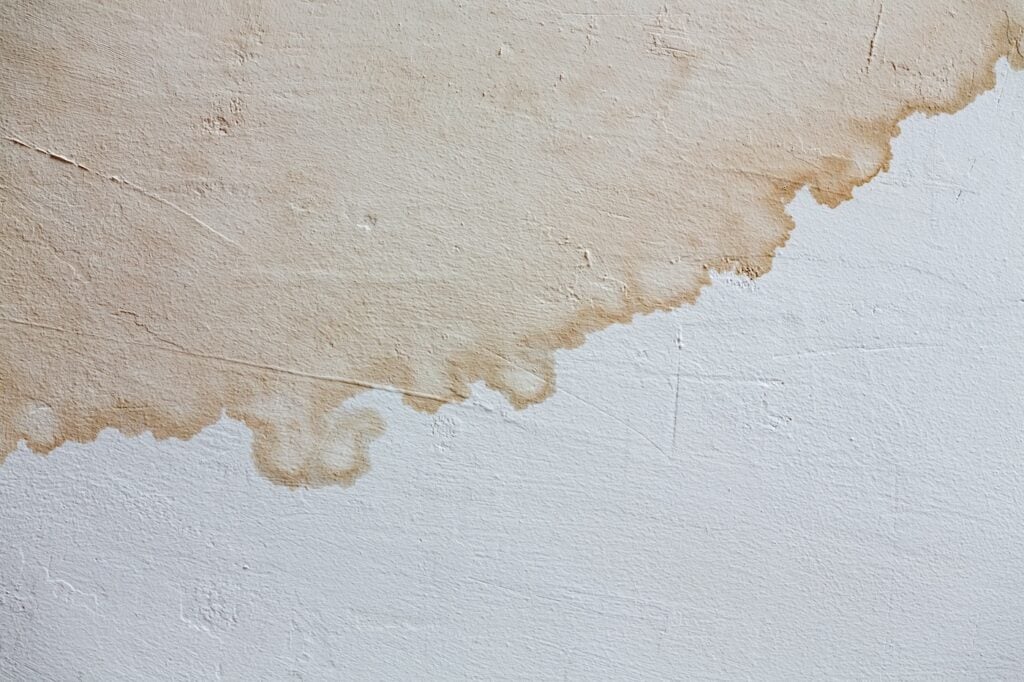
Sometimes you won’t notice roof damage until it shows up indoors. Interior signs often appear long after water has started seeping in, so staying alert can help you stop the problem before it spreads further.
- Stains and Discoloration: Look for brown or yellow water stains on ceilings and walls. Even small spots may indicate a slow, ongoing leak.
- Musty Odors: Persistent damp or moldy smells in the attic or upstairs rooms suggest hidden moisture. These odors are often the first sign homeowners notice.
- Attic Floor Damage: Inspect the attic floor for soft spots, damp insulation, or mold growth. Water that seeps through the roof deck often collects here first, making it a key area to monitor.
- Peeling Paint or Bubbling Plaster: When water seeps behind walls, it damages finishes. Watch for peeling paint, warped trim, or bubbling drywall.
What to Do When You Find Signs of a Leak
Once you notice water damage or suspect a leak, it’s important to act quickly. Even if you can’t fix the roof yourself, there are steps you can take to protect your home until a professional arrives.
- Contain the Water: Place buckets, pans, or tarps under drips to prevent water from spreading. If water is pooling in the ceiling, poke a small hole to release it into a container before it bursts through.
- Protect Your Belongings: Move furniture, electronics, and valuables out of harm’s way. Water damage spreads fast, so even a few minutes of action can save costly repairs.
- Document the Damage: Take photos of affected areas. This documentation is helpful for insurance claims and gives your contractor a clear idea of the damage. Recording the timeline of the leak can also provide valuable evidence if additional problems develop later.
Why Professional Help Is Essential
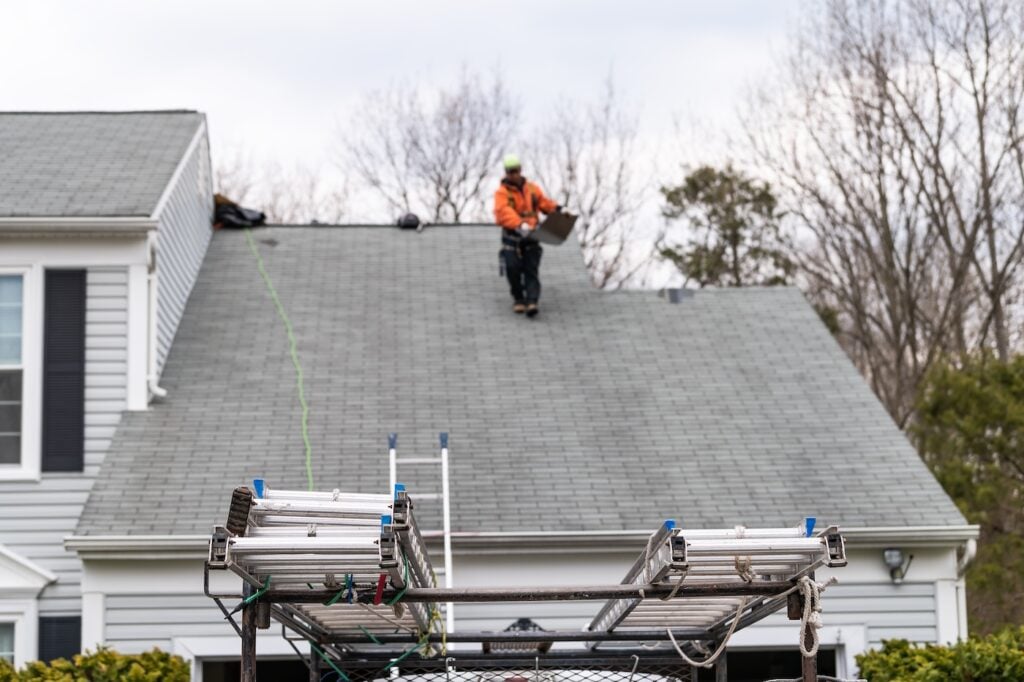
While homeowners can spot signs of a leak, repairing the source requires expertise. Roofing systems are complex, and patching the wrong area could leave the real problem unresolved. Professional contractors have the tools to trace water back to its source, repair flashing, replace shingles, and ensure your roof is watertight again. Attempting a DIY repair may make things worse, especially if you miss hidden issues like saturated underlayment or a compromised roof deck. In addition, working on a roof without the proper safety equipment can be dangerous, which is another reason to leave repairs to experienced professionals.
Local Weather Challenges That Cause Leaks
In Newark, DE, homeowners deal with heavy spring rains, winter snow, and humid summers. These conditions stress roofing systems, making leaks more common. Ice dams may form during freezing temperatures, forcing water beneath shingles. Summer thunderstorms can overwhelm drainage systems, while high humidity encourages mold growth in poorly ventilated attics. These seasonal challenges highlight why proactive maintenance is so important for homes in the Mid-Atlantic region. Staying ahead of the weather with preventive care can help protect your home all year long.
Preventing Future Leaks
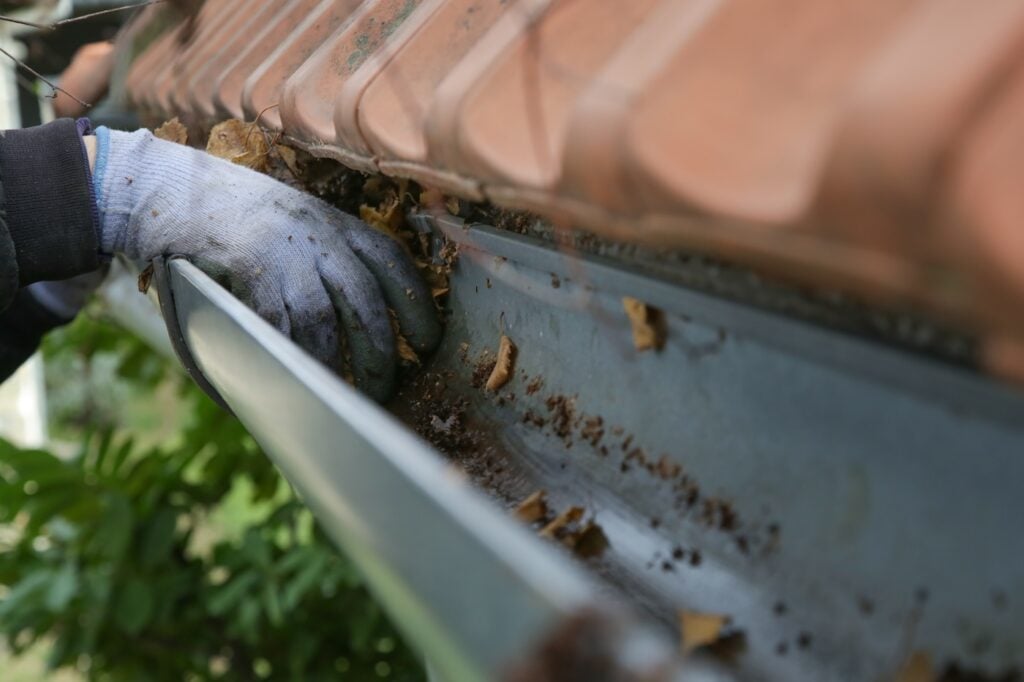
Addressing the current leak is important, but prevention saves time, stress, and money. Simple seasonal maintenance can significantly reduce your risk of future leaks.
- Routine Inspections: Schedule professional roof inspections at least once per year and after major storms. Trained roofers can spot small issues before they grow into major problems.
- Gutter Maintenance: Clean your gutters regularly to prevent clogs that push water back onto your roof. Adding gutter guards can also reduce debris buildup.
- Tree Trimming: Overhanging branches can damage shingles and drop debris that leads to moisture buildup. Trimming trees back protects both the roof and gutters.
- Upgrade Flashing: Older flashing may weaken or corrode. Replacing it with modern, durable materials helps seal vulnerable roof areas.
Keep Your Home Dry with CTA Exteriors
At CTA Exteriors, we know that roof leaks never happen at a convenient time. Our experienced team can quickly identify the source of a leak and provide reliable repairs that protect your home. We’re proud to serve home and business owners in Newark, DE, and nearby cities with expert roofing inspections, repairs, and more. With free inspections and trusted service, we’ll make sure your roof is ready to handle whatever the weather brings.
Contact CTA Exteriors today to schedule your free inspection and take the first step toward a leak-free roof.
